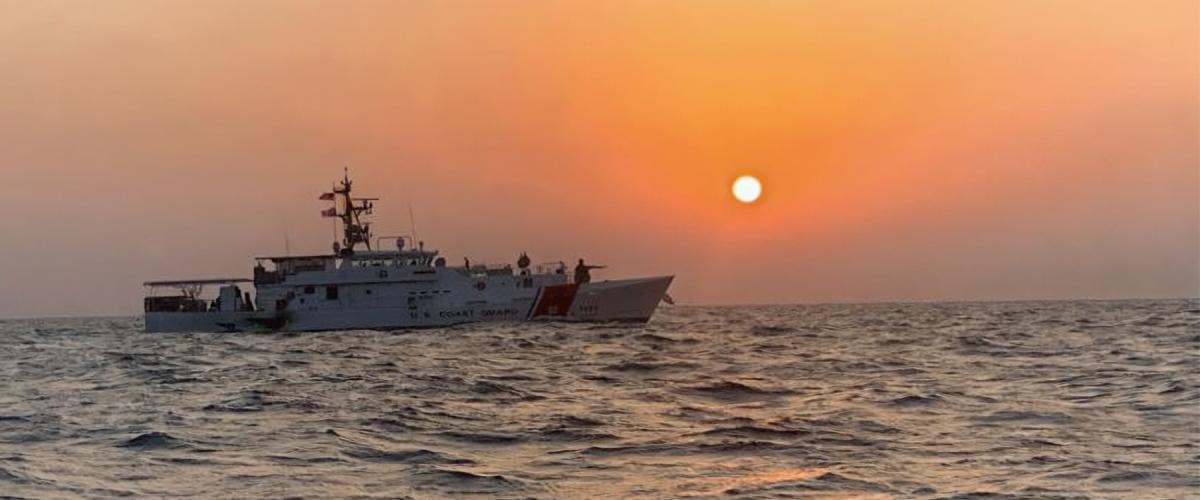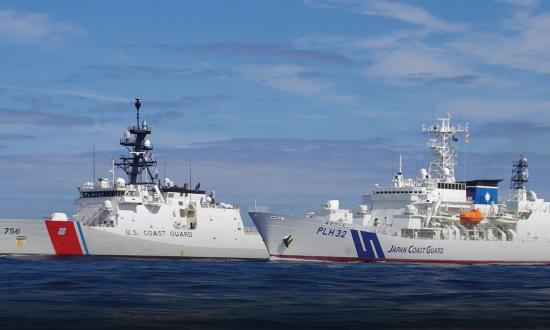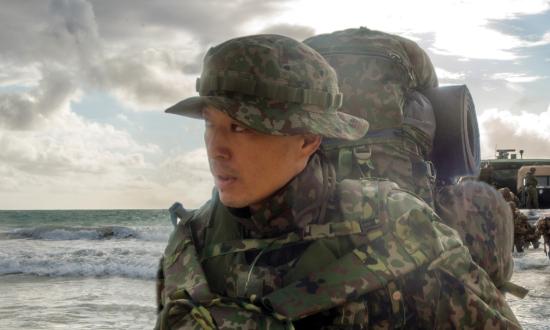During the 2023 State of the Coast Guard address, the service’s Commandant, Admiral Linda Fagan, noted the United States Coast Guard “has never been in greater demand around the world.” She specifically cited the Coast Guard’s value in the Indo-Pacific, West Africa, South America, and the Arabian Gulf, adding that the Coast Guard is viewed as the relevant force model for many partner nations throughout the world. “We are a global Coast Guard. This is our value to the nation (emphasis added),” Fagan concluded.
The Commandant was correct about the ways in which the Coast Guard bolsters the United States and partner nations in ways that cannot be replicated by other agencies. Despite this, the service has not maximized its overseas potential: the Coast Guard is slow to meet partner nation training requests, fails to assert its relevant authorities to resource and conduct missions abroad, and lacks the personnel policies and overseas staffing for international efficacy. A series of targeted adjustments can and should be undertaken to make the vision of a “global Coast Guard” a reality.
A Value Proposition Repeated (and Repeated)
Fagan was echoing many commentators who have recognized how the Coast Guard’s size, missions, and authorities make it the United States’ best tool for engaging with most partner nation maritime forces. She was also in line with the views of her predecessors, who have repeatedly, definitively, and publicly announced that the Coast Guard should be viewed and valued by national security decision-makers as an internationally relevant force. Admiral Karl Schultz (Commandant, 201822) highlighted the way in which the Coast Guard “bridged Department of State [DOS] diplomacy and Department of Defense [DoD] lethality” by offering “soft power, multimission flexibility, trusted access, and nonkinetic options” overseas. Admiral Paul Zukunft (Commandant, 201418) cited the high international demand for U.S. Coast Guard services, explaining that dozens of partner nations frequently approached him asking for support to enhance their capabilities in missions such as counter-illegal, unreported, and unregulated (IUU) fishing, counter-human trafficking, search and rescue, and environmental response. Both Commandants used the “global Coast Guard” moniker, highlighting how their small, nimble, flexible service was both a more relevant model for partner nation maritime forces than any DoD branch and more effective than them in executing a host of international missions.
Unmet Potential
Given this frequent and forceful proclamation of the service’s important role in engaging global partners, it might strike an observer as strange that, as described in a jointly-produced DoD/DOS Foreign Military Training Report to Congress, “The U.S. Coast Guard has no independent authority to conduct [international] training” and must fund any such activities via a DOS or DoD program. Indeed, the Coast Guard’s own International Training Handbook outlines the way in which the service handles foreign training requests using the procedures of and in coordination with the lumbering bureaucracy of the Defense Security Cooperation Agency (DSCA). The same nimble and flexible Coast Guard that provides such unique value to smaller overseas forces, in other words, at the very point of training engagement with those forces, acts not just like but also through the very DoD bureaucracy and management model so frequently described as inapplicable to partner nations.
Even when a Coast Guard training program is selected via DoD and DOS-run processes, the International Training Handbook advises that requests submitted by partner nations by March of a given year will likely result in training team deployment sometime after February of the following year.1 As demand for Coast Guard training continues to grow, longer delays will inevitably ensue, unless something changes.
Unfortunately, the gap between the service’s identification as—or even intent to become—a global force and its actual commitment of resources or adoption of policies to that end is not limited to the management of international training deployments. Other examples of successful international engagement also coincide with important questions about how that engagement can be effectively expanded under current force management practices.
Take, for example, the idea of exporting the Patrol Forces (PATFOR) model—currently employed by a squadron of six Coast Guard vessels in Southwest Asia—to other regions of the world. Embedded with the U.S. Fifth Fleet in Bahrain, PATFOR Southwest Asia (PATFORSWA) is persistently present in its overseas area of operations, meaning its DoD affiliation does not cause delays in service delivery.
Consequently, PATFORSWA can respond rapidly to emergent situations and continually engage and work with partner nation forces at their level and moment of need. After 20 years of shifting missions, the unit continues to prove its value. Most recently, a PATFORSWA vessel interdicted a shipment of illicit narcotics worth an estimated $30 million in the Gulf of Oman in May of this year.
The capabilities, expertise, and partner nation engagement PATFORSWA offers have made it an appealing model for those looking to replicate its successes elsewhere. To that end, multiple experts and commentators have recommended the establishment of a Coast Guard PATFOR Indo-Pacific, and Zukunft frequently discussed the idea of a PATFOR Central America throughout his tenure as Commandant. Such proposals are compelling, but proponents tend to gloss over an important detail. PATFORSWA was initially justified as a DoD-subordinate task force to support Operation Iraqi Freedom; the transformation of its mission focus over the course of two decades occurred well after the unit and its DoD funding and logistical support processes were established. No contemporary Combatant Command can cite the justification of major combat operations to obtain a standing, integrated Coast Guard force.
Rather, Coast Guard leaders and commentators state that the relevant missions any new PATFORs would need to conduct—and for which they would need to engage partner nations—would be counter-IUU fishing, counter-smuggling, coastal law enforcement, and development of maritime constabulary forces. A force looking to execute these missions would not be best positioned as a subordinate unit to a department (DoD) that does not have the expertise or legal authorities to conduct them. Rather, a regular Coast Guard unit operating under its own service’s direction would bring the full suite of law enforcement authorities necessary.
While DoD can support counter-IUU fishing missions, for instance, its ability to fund and direct those missions has certain limitations. Thus, creating or assigning a Coast Guard PATFOR under, say, Indo-Pacific Command would be an actual hindrance to operations. In short, any new overseas PATFORs would best function outside of DoD, and the Coast Guard would require a force expansion and increased funding appropriation to make that happen. The service should make that argument to both departmental (Department of Homeland Security [DHS]) and congressional leadership.
Foreign Affairs
Yet another example of positive Coast Guard international engagement afflicted by self-imposed limitations is the service’s use of expert advisors assigned to overseas diplomatic missions. Over the past several years, the Coast Guard has responded to international demand for its expertise by posting new attachés, liaisons, and advisors in critical countries such as Brazil, Russia, China, Vietnam, Australia, Malaysia, the Philippines, and Denmark. Despite this, the service has yet to codify or professionalize its overseas assignment process or office structures, or to develop a foreign affairs career path in a manner that suggests a meaningful commitment to sustained impact overseas. The service has, for instance, no Foreign Affairs Officer (FAO) program, and it does not acknowledge foreign affairs as a career path.
Unsurprisingly, a mere half dozen of nearly 40 active component flag officers in the service have ever served a permanent overseas tour. As recently as 2018, the Coast Guard filled its liaison billets at the embassies in Colombia and Panama (the latter being a designated linguist billet, requiring language proficiency higher than fluency) with non-Spanish speakers; the service did not provide either officer with any language training before (or after) their departure for the posts. Moreover, when officers assigned to such posts arrive, they are most likely to find that their office (unless they are embedded in a joint Defense Attaché Office) consists entirely of a single person (themselves). Meanwhile, other DHS agencies with a presence at these posts will have significantly larger footprints and generally employ a budgeted, locally employed office assistant to help manage affairs. The Coast Guard funds no such assistants anywhere.
Organizing and Investing for Global Impact
Two decades ago, Coast Guard officers often joked that their service, frequently asked to do “more with less,” would eventually be asked to do “everything with nothing.”2 By 2016, Admiral Zukunft was promising that “we are going to remove ‘Do More with Less’ from the Coast Guard lexicon.” There has never been a better time for the service to make that shift, especially in terms of international engagement. The Coast Guard’s status as an irreplaceable maritime security partner for countless nations—one that can advance U.S. national security in a manner that no other agency can—is clearly and broadly recognized; it is time to manage, fund, and resource the service accordingly. Specifically, the Coast Guard should:
Change its culture and messaging around international missions and engagement. Overseas activities should not merely or even primarily be viewed as defense missions under the DoD umbrella. Title 14 USC 710, “Assistance to Foreign Governments and Maritime Authorities,” for instance, explicitly permits the service to assist partner nation maritime services under its own authority. It is time to link an appropriation to that authority, including a necessary force expansion that will support a consistent, predictable level of Coast Guard international engagement that can be delivered in a reasonable amount of time.
Grow overseas training teams and unchain them from DoD processes and funding. This would expand the number of engagements, reduce wait times for partners to receive Coast Guard assistance, and positively impact the allied security network at sea.
Formalize and improve personnel policies related to overseas assignments, offices, and career paths. The service should create a FAO program; if it is not feasible for the Coast Guard to have a dedicated FAO community comparable to other branches, it could alternatively pursue a “FAO-lite” program in which officers have the option to pursue the FAO path as a stand-alone career trajectory or to rotate between FAO assignments and operational specialty assignments such as operations afloat or ashore. This is how the service already treats both the legal and financial management specialties. The Coast Guard should additionally acknowledge foreign affairs as a career path and reward overseas service in promotion and assignment processes. The service also should enhance investment in overseas activities by funding necessary language training and growing overseas offices to make them of a size and capability comparable to the offices of sister DHS agencies.
If the Coast Guard’s value to the nation is truly its global character and mandate, then investment needs to be made to make that a reality. A decade of touting the service’s unique value in the international sphere has sufficiently convinced political leaders that the Coast Guard is globally relevant. Those same stakeholders should not take much further convincing that funding and expanding Coast Guard activities overseas is indeed the best way to enhance both global stability and U.S. national security in the maritime domain. In fact, ten years of talk without subsequent action to back it up—in terms of strategies and budget requests to grow international presence—may well result in the message losing its impact. The service should act now to expand and improve the management of its overseas commitments, thereby living up to its often-announced status as a global Coast Guard.
1. Department of Defense, U.S. Coast Guard International Training Handbook, edition 16, section V, 8.
2. Scott Berinato, “Same Ship, Different Day: the Coast Guard and Post9/11 Maritime Security,” Joint Center for Operational Analysis and Lessons Learned (JCOALL) Bulletin VI, no. 4 (September 2004), 20.






